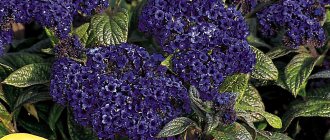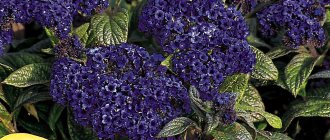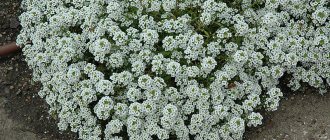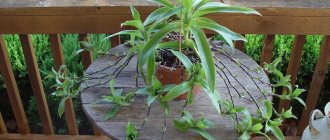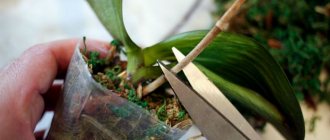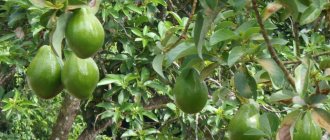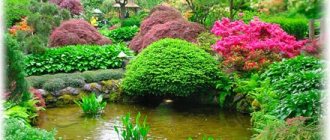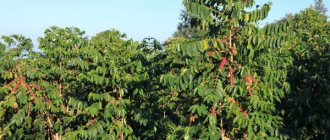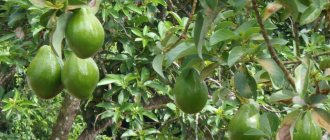- November 11, 2018
- Houseplants
- Ekaterina Ryzhkova
What is a living tree indoor plant? Is it useful? You will find answers to these and other questions in the article. Crassula, known as the living or money tree, belongs to the Crassula family. This genus includes about 350 species, many of which are native to tropical and southern Africa, as well as Madagascar.
At the same time, the medicinal qualities of this plant are known almost all over the world. In the article you will see a photo of an indoor living tree, and also get acquainted with its properties and growing characteristics.
Short description
In the photo, the live indoor tree looks great. What kind of plant is this? Crassula, or Crassula, is a genus of perennial and annual succulents of the Crassula family, widely known mainly in the southern hemisphere.
Countless species of Crassula live in the arid regions of the planet. Many of them are grown as indoor plants. Crassula has the following characteristics:
- Stem: juicy, thick.
- Fruit: leathery leaflet.
- Rhizome: roots are superficial, thin.
- Homeland: Arabian Peninsula, Tropical and Southern Africa, Madagascar.
- Family: Crassulaceae.
- Leaves: opposite, sessile, fleshy.
- Lighting: Bright light is desirable.
- Watering: rare in winter, moderate in summer.
- Reproductive ability: propagated by stem cuttings and leaves.
- Keeping temperature: in winter - 8-10 °C, in summer - 22-25 °C.
Rating of popular indoor trees
Growing trees indoors is not as problematic as it might seem at first glance. And although the principles of caring for each type have their own, each of them needs basic attention. For you there is a catalog of indoor trees, which contains a list with photographs and recommendations for caring for them.
Only residents of large houses can afford a palm tree. This is due to the fact that it requires extensive space for rapid, intensive growth. It is better to install the tub in a place where there are no green neighbors, since palm trees are very unfriendly to them.
Bocarnea (nolina) or bottle tree in its homeland can reach enormous sizes, and the interesting name bocarnea was popularly received due to the interesting appearance of the trunk, thickened towards the lower part. As nature intended, this tree can survive for a long time without watering, so it does not require any special care.
The banana is attractive because it decorates any room with its decorative appearance, and can bear sweet fruits
Growing a banana at home is quite simple, the only important thing is that the soil requires constant feeding due to the rapid and active growth of the trunk
Citrus types of indoor trees are represented by the following options: lime, lemon, tangerine, orange. It is these options that are in great demand, as they can adapt to different environmental conditions. Lemon and lime can forgive you any mistakes in care, and tangerine will dry out only if the owner is careless. Citrus will delight not only with its appearance, but also with its subtle aroma in the apartment.
The coffee tree will not tolerate any green surroundings; you will have to remove all other pots from this room. Coffee itself does not require much effort to grow, but you can’t hope for fruit. They can be achieved only in 1 case out of 1000 and only if the temperature and humidity levels are observed.
Hibiscus is popularly called Chinese rose. Even from a tiny sprout you can grow a large flower, and with proper care, growth occurs at an accelerated pace. The flower tree is a frequent visitor to offices, as it has a high level of adaptation to different environmental conditions.
- Tea tree - takes root well in the home with proper care. Greens love a moist environment and hate direct sunlight. Water it abundantly and often, but do not fill it to the point of puddles. If the flower likes it, then in a couple of years you will have your own tea.
- Monstera is a fairly large-sized type of greenery that does not require complex care. Its height can reach up to 5 meters, and the monstera itself is one of the most unpretentious representatives of the flora. The growth is very interesting, because as the foliage matures, holes appear, which later turn into peculiar slits. Monstera does not like temperature changes, so it can only be bred at home, but it is dangerous to do this in the office, since the minimum temperature is +17 degrees. If you plan to install a flowerpot on a windowsill, then it is better to choose the sunny side, but avoid direct sunlight.
Ficus benjamina grows to enormous sizes - 20 meters in countries with a humid climate. As indoor plants, ficus trees will barely reach 3 meters, but choose the right place with a reserve so as not to move the tub later. Moreover, it is not even recommended to twist the pot, otherwise the leaves may fall off. Avoid cold, dark and drafty rooms. To prevent a living tree from drying out, it is periodically sprayed. Moderate watering is necessary: without dryness, but also without flooding.
Laurel. Caring for this species at home requires compliance with certain conditions. Laurel, 1.5-2 meters high, loves light, so place the pots on the south side. Laurel foliage has a fairly dense structure, and therefore even bright sun cannot harm the greenery. In the shade it will immediately lose its attractiveness. Spraying and systematic (once a month) shower are indicated for the foliage. Watering is necessary frequently and abundantly, making sure that the soil does not dry out.
Dieffenbachia is a frequent visitor to offices up to 2 meters high. The choice is justified by its beauty and ability to absorb harmful substances in the air. Dieffenbachia sap is poisonous, so be careful if children or pets live in the house. The indoor flower-tree Dieffenbachia requires a lot of light all year round, but in the summer heat the foliage should be shaded. In spring and summer, water 3 times a week, and in winter and autumn - once a week.
Abutilon represents flowering indoor trees, the second name of which is indoor maple, the third is rope. Height is up to 1.5 meters, it is unpretentious in care, and blooms from spring to autumn, and at temperatures above +15 in winter. You can place it either in an apartment or on a balcony or loggia. Requires moderate watering and sprinkling.
Many gardeners consider Khoveya to be the most successful example for home maintenance. The height is no more than 2 meters. The location side is unimportant, and if you forget about it for a week, nothing will happen, the hovea will not die.
Crassula or money tree is a good idea for those who want to decorate the interior, but do not have much time to care for greenery. Crassula is popularly called the “tree of happiness” or “tree of love.” Its leaves are small, round and fleshy with a glossy shiny surface. They shine like gold coins, so many legends about the enrichment of their owners are associated with the fat woman. That is why the plant is called “money plant”, and is often found in offices and financial institutions. Wet soil can cause roots to rot. Do not plant the sprouts in too large tubs; it is better to choose a wide and shallow container so that the money tree indoor plant can form a symmetrical crown. It does not need feeding, and replanting is required no more than once a year.
Araucaria or monkey tree amazes with its unusual appearance. In the photo, the araucaria resembles a New Year tree, but looks great on the windowsill all year round. It can reach a height of 1.5 meters; araucaria requires moderate watering (2 times a week) and replanting once a year.
Dracaena reaches a height of 3 meters, and during the growth period the lower leaves fall off, leaving a characteristic pattern on the trunk. The pot should be placed in the light, but not in direct rays. Water frequently, without allowing the soil to remain dry. Sweep away the dust from the leaves and spray them with water.
Boxwood will live well in the garden in the summer, and in winter you can take it home. This type of home flora tolerates heat changes and lack of water and light well. The disadvantage is slow growth.
Interesting names and colorful photos beckon buyers to acquire one or another version of decorative flowering greenery.
Varieties
Few have seen photos of varieties of living indoor trees. We have already mentioned that there are more than 300 different species in the genus. Some Crassula plants are dwarf plants, reaching no more than 2 cm in height, others grow up to 3-4 m. Many species are perennials, some have monocarpic shoots that end in an inflorescence and die off after the fruits ripen. There are also annual forms that die completely after flowering.
In the photo, the indoor living trees are not the same. Some of them have herbaceous stems, both creeping and erect. There are also shrubby forms with fleshy, succulent or woody trunks. You can also see quite tall (up to 3-4 m) tree-like representatives.
A common feature of the genus, with all the diversity of forms, can be considered the juicy, fleshy structure of the stems.
Bonsai
Bonsai is not just plants, it is a real art of living miniatures, filled with deep meaning. Bonsai as a culture appeared more than two thousand years ago in Ancient China. Followers of the religious movement Taoism used miniature trees to study how the world around us influences human perception of the Universe. Then bonsai came to Japan and won the hearts and souls of the inhabitants of this country. This culture became so Japanese that the original term “bonsai” appeared, which meant “what grows on a tray.”
Lighting is the main factor that can influence the normal development of any mini-tree. Therefore, the window sill is considered the only favorable area for interior bonsai. As a last resort, you can highlight the composition with special lamps, the luminescence spectrum of which is as close as possible to daylight.
Photo: sedmoycanal.com
Photo:
Leaves
What do the leaves of a living indoor tree look like in the photo? As a rule, they are opposite, sessile or collected in rosettes, just like the trunks, fleshy and juicy. Their color varies from green to yellowish or blue with a pronounced waxy coating. In bright sunlight they can acquire a dark cherry or reddish tint, which gives the plant an additional decorative effect.
The surface of the leaf can be pubescent or smooth, in some species it is covered with various cilia, papillae, grooves, which help reduce the evaporation of water and often serve to store it in case of unfavorable periods.
The shape and size of the sheets are very diverse. They can be tiny scales covering the stems and having a spherical configuration; they can reach 40 cm in large tree-like representatives. The shape varies from spherical to flat, convex at the bottom and top, shell-shaped, with a jagged or solid edge.
The compact numerous species of Crassula growing in arid areas are very attractive. They are characterized by a unique structure of basal rosettes with leaves growing in a spiral or densely arranged in almost square columns.
tangerine tree
The sunny and elegant tangerine tree will become a bright element of the landscape design of the premises. The plant releases special substances that enrich the air. Mandarin repels insects and produces good yields of fragrant fruits.
You can often find dwarf varieties of mandarin on windows. Its leaves are dense, green, and its trunk is tree-like. The tangerine tree blooms with small flowers, in place of which green tangerines are formed. When ripe, the fruits turn orange. And they smell just like their “relatives” growing in gardens!
Photo: ofdesign.net
Crassula shape and flowers
Depending on the light intensity, the shape of the plant can transform. So, when there is an excess of it, the trunks turn into a sphere, and when there is a deficiency, they lengthen.
Does the flower of a living tree look unusually beautiful in the photo? As a rule, Crassula flowers are white, small, yellowish, rarely bluish or red, usually collected in racemes or paniculate inflorescences formed at the ends of the shoots, sometimes axillary single. They bloom alternately, starting from the middle of the inflorescence.
Contraindications
Otherwise, the medicinal properties of a living tree have practically no contraindications: only people with individual intolerance . In addition, the use of a living tree in treatment is prohibited for pregnant women and nursing mothers, as well as young children, whose bodies may not be prepared.
It should be noted that any treatment must be agreed with a doctor. The fact is that living wood contains arsenic. The substance was previously often used in medicine, but now its use raises serious concerns among many doctors, especially when used in excess and self-prescribed. Their concerns are related to the fact that the arsenic compound contained in the plant can accumulate in the body and cause poisoning.
However, it is worth noting that the doses of arsenic in the plant are minimal and will not cause harm if consumed in moderation. Before use, it is recommended to consult a doctor in advance, especially if the diseases concern internal organs. Exceeding the permissible dose is also prohibited.
History of Crassula and its use in culture
The plant first became known to European gardeners in 1687, and 45 years later it received the name Crassula. The flower was so named because of the characteristic design of the leaves and stems. The word crassus translated from Latin means “thick”, which is why the second popular name of the genus is Crassula.
The outlandish appearance of the culture and its unpretentiousness to growing conditions attracted the attention of lovers of home floriculture, and Carl Linnaeus already in 1753 described about 20 species of Crassula in his works. But they became popular at the beginning of the 19th century, when many exotic plants were brought to Europe from South Africa (Cape region).
European dwarf olive
Olives from the olive family can be successfully grown at home. The plant was brought to us from Greece, a country with a mild subtropical climate. In indoor conditions, olive grows up to 1.5 m in height. The seedling begins to bear fruit only in the 8th-9th year. In spring, the olive tree is covered with small fragrant flowers with yellowish petals.
Olive is easy to care for, as it has a strong root system that can revive a stem damaged by drought and disease. Seedlings are obtained by cuttings. You can grow an olive yourself from a seed.
How is the plant useful?
The succulents we are considering are still very popular among gardeners today. In Russia they call this living tree a money tree. Crassula oval (C. Ovata) is especially common in our country. In nature, the succulent reaches a height of 3 m, and at home it looks like an attractive tree, easy to trim and unpretentious in care.
It is generally accepted that the plant brings good luck to its owner in money matters, which is why it received its second name. According to Chinese metaphysics, a money tree in the home activates the wealth zone, but modern science also confirms the usefulness of the flower.
What are the medicinal properties of the indoor plant living tree? This succulent releases phytoncides into the air that have antifungal, antiviral and antibacterial activity. Crassula tissue also has the same qualities, which can be used for external treatment of arthritis, various skin lesions, etc.
Important! Parts of the plant should not be ingested, as they contain a lot of arsenic.
Ficus
This is such an ancient plant that traces of it were found during archaeological excavations of the pyramids of the pharaohs and tombs of ancient rulers. In Ancient Rome, ficus was considered a precious plant; it was used to decorate interiors and include its images in wall paintings.
If there are at least several plants in your home greenhouse, at least one of them will be a ficus. It has many varieties, and each is beautiful, worthy of the best place in the house. Ficus is unpretentious - it needs to be watered and sprayed on time, and fed once every two to three weeks.
Ficus is a medicinal plant. Its juice was used to treat tuberculosis and some types of cancer many decades ago. But our interior design studio is against such experiments and offers ficus only as a universal decoration for rooms in any style.
Photo:
Photo: hydrozorg.nl
How to properly care? Lighting and location
Let's look at the rules for caring for the most famous plant of the Crassula genus - Crassula arborescens. Indoors, it must be placed near windows facing southwest. Avoid direct sunlight, as this will cause the leaves to turn red, wither and fall off. They can also fall due to lack of fresh air.
It is better to take the fat woman out onto the balcony in the summer, she will be comfortable there, and besides, clean air will only do her good. In winter, it is better to move the succulent to the south side.
Hovea
Howea perennial belongs to the palm family. Under artificial conditions, the trunk, covered with ring-shaped scars, grows to the ceiling. The feathery leaves form a shady canopy. Khoveya is withering away from lack of light. It should be located in a spacious room, closer to the windows facing south. Watering should be moderate in winter and abundant in summer.
Palm trees do not tolerate dry air well. From lack of moisture, its leaves begin to turn yellow. From time to time, the greens need to be sprayed with water at room temperature. It is important not to allow the lump of earth in the pot to dry out. To prevent this from happening, in the event of a long absence, an automatic watering system is necessary.
The perennial palm grows to gigantic size, spreading its feathery leaves widely. It should be located in spacious rooms. Green beauty cleans the air well. Its leaves are safe for animals and small children. Khoveya can be placed in a spacious nursery.
Temperature for Crassula
The optimal temperature for keeping a living tree in spring and summer is 20-25 °C. In summer, take it outside as the plant needs fresh air.
In autumn and winter, the most suitable temperature is 15 °C or less, but not lower than 4 °C. Crassula can overwinter at home temperatures, but then there is a chance that its leaves will wither and fall off.
Important! The fat plant should not be placed near heating appliances and radiators.
Kalanchoe for varicose veins
For varicose veins, prepare a special compress. You will need a dark glass container, fresh Kalanchoe leaves and vodka. The container is filled one third with finely crushed leaves of the fat plant. The remaining space is filled with diluted alcohol or vodka. The resulting mixture must be allowed to brew for at least 30 days. The resulting alcohol tincture is rubbed onto the affected areas.
Pharmacological enterprises use the beneficial properties of the fat plant or money tree. Due to the medicinal properties of Crassula, preparations containing Crassula extract have been used. But we should not forget that each drug has its own contraindications.
Transfer
Flower growers do not recommend frequently replanting the money tree. It needs to be replanted only when it has grown greatly or the bush needs to be divided. This procedure is carried out at least once every 3 years.
It is better to replant Crassula in the spring. Purchased soil for succulents and cacti is suitable for this.
Important! When transplanting, you need to use only high-quality drainage.
Signs
There are signs about the money tree. This plant is believed to be a symbol of happiness, wealth and financial well-being. What a flower looks like means how the owners deal with money. The power of the money tree as a magnet for attracting financial flows directly depends on care. You need to love him and talk about wealth in front of him only in a positive way. In addition, to enhance the magic of a flower, it is recommended to plant it in a red pot and put coins on the bottom or hang them on the branches.
Propagation by cuttings
Crassula propagates by seeds, cuttings or dividing the bush. If you propagate it from cuttings, place them in water to germinate the roots. For faster root formation, add charcoal to the water. If desired, cuttings can be immediately rooted in the ground.
After roots have appeared on the Crassula cuttings placed in water, they are planted in small pots with leaf or turf soil, with the addition of sand in equal proportions. Next, these pots should be kept at a temperature of 16-18 ° C. Small Crassulas are watered once a day. This is the easiest and most popular way to propagate a living tree.
Citrus trees
They are grown at home, planted in large boxes and flowerpots. According to Feng Shui, they bring happiness and prosperity to the home. Citrus fruits are propagated by seeds and cuttings. Caring for them is easy. Regular watering, spraying and fertilizing once a year is sufficient. Lemon and orange seedlings require curly pruning. There are several varieties suitable for growing at home. The following are considered the most popular:
- lemon;
- calamondin;
- tangerine tree;
- grapefruit;
- citron.
In order for exotic citrus to bear fruit successfully, it is necessary to create ideal conditions: optimal temperature, constant humidity, regular feeding of fruit seedlings, lighting in the winter. For successful fruiting, grafting is necessary.
Propagation by seeds
Flower growers rarely use this method of propagating Crassula, although caring for sprouted seeds is exactly the same as for cuttings. Crassula may bloom, but this does not happen often.
If your Crassula has never bloomed, then the problem lies in poor lighting. Very often it begins to bloom during its active growth.
In order for the money tree to have a decorative appearance, you need to shape its crown. To do this, it is necessary to trim off overgrown tree branches. Flower growers recommend making the cut so that there are 4 leaves left on the branch.
They also recommend pinching. This primarily concerns the top of the Crassula. In order for the crown of the plant to be beautiful and uniform, the plant must be turned in different directions towards the light.
Camellia
A typical representative of the tea family - the obstinate camellia - with its magnificent lush flowering will decorate the interior of the apartment. In suitable conditions it blooms profusely. Over time, a spreading crown forms. The Japanese beauty is capricious in its care. The room temperature must be maintained no higher than 15 degrees. For growth and flowering, air humidity and constant watering with soft water are required. The reward will be abundant flowering. In spring, camellia is covered with large inflorescences consisting of white, pink and purple petals.
Diseases and pests
Crassula, like other indoor plants, is susceptible to attack by parasites. Particularly dangerous are scale insects, spider mites and mealybugs.
If a fat plant is infected with a spider mite, a barely noticeable web appears on its stem and leaves. In this situation, a soap solution or medications (Fitoverm, Fufanon) will help.
When attacked by scale insects, brown and yellow spots appear on the leaves. The plant needs to be treated in the same way as for spider mite infestation.
If the fat plant is damaged by mealybugs, then you need to carry out medical procedures using a solution of laundry soap, and if that doesn’t help, use insecticides. You can also wipe the plant with cotton wool soaked in alcohol.
Chinese rose (hibiscus)
If you have seen a Chinese rose bloom, you will definitely want to add this plant to your interior. Hibiscus has many varieties, and each is distinguished by its abundant flowering and unpretentiousness. Perhaps, it is only important to water these plants on time and place them in illuminated areas of the room.
With the help of pruning, you can form fancy shapes, and if you put two hibiscus next to each other and make a support for them in the form of an arch, in a year and a half you will get a spectacular blooming arched composition right in the living room.
Hibiscus, with proper care, timely pruning and feeding, can bloom for 8-10 months. Hibiscus rests during the winter months, but under favorable conditions it can provide flowers throughout the year.
Photo:
Recipes
The living tree is a medicinal houseplant, often used along with aloe. It contains a huge number of volatile oils and beneficial microelements, which make it possible to use its medicinal qualities for a number of ailments. To combat specific diseases, there are the following recipes:
- For coughs, sore throats and other throat ailments: cut 10 leaves from a tree, squeeze the juice out of them and mix with water (1 tbsp.). Gargle with the solution three times a day without swallowing. If you have polyposis of the nasal mucosa, douche.
- For scratches, burns and wounds: take a couple of Crassula leaves, rinse and chop into a paste. Apply them to the sore spot or make a compress.
- For herpes and insect bites: squeeze the juice from the leaves, apply it to the skin a couple of times a day at equal intervals, but no more than 6 times.
- For inflammatory kidney ailments: pour boiling water (1 tbsp) over 5 leaves of Crassula and leave to steep for 1 hour. Take the infusion 15 minutes before. before meals three times a day, 1 tbsp. l.
- For diseases of the duodenum and ulcers: eat 2 leaves of crassula once a day.
Watering
A common question that worries gardeners is how to properly water a money tree. Waterlogging should be avoided, so the tree should be watered quite carefully. On hot days, when water evaporates faster, the tree can absorb heavy watering very well and needs it to grow. On cool days, however, you should rarely water the tree. So it is in winter, when it stands in a bright but cool place. Here the soil can dry out within a few days.
Crassula will tolerate dry soil more easily than very wet soil.
Dieffenbachia
Grows up to two meters in height. The diverse guest of the sunny tropics is demanding of care. Does not tolerate drafts and cold. Irregular watering leads to yellowing of the leaves. In order for the leaf to retain its rich green color, it must be sprayed with hot water.
Dieffenbachia can liven up a dull apartment interior. But not everyone knows that its juice is poisonous. Upon contact with human skin, irritation occurs. If the juice gets into the eyes, vision problems may occur. In a family with small children and animals, it is not worth growing Dieffenbachia.
Forum, reviews
We invite you to read the reviews of people who have experienced the healing properties of an exotic guest:
- Victoria periodically suffers from cervical chondrosis. Stiffness and pain go away after the first rubbing with alcohol tincture of Crassula.
- Natalya's husband was diagnosed with a stomach ulcer. Having studied in detail the information about the effect of succulent on the body, the woman chose to treat her husband with another folk remedy - aloe juice. The result was not long in coming.
- Student Karina was embarrassed about her appearance due to the large number of teenage acne on her face. A neighbor told her to wipe her face with a cut of a leaf and her skin returned to normal.
- Ekaterina knows firsthand what an ingrown toenail is. The problem was so bad that the surgeon suggested surgery to remove the plate. Remembering the healing crassula, the woman quickly took action and independently eliminated the cosmetic defect.
Conclusion
Having learned about the medicinal properties and contraindications to the use of money tree, you will probably want to place such a green doctor on your windowsill. With good care, the succulent will delight you with its beautiful appearance and help maintain your health.
